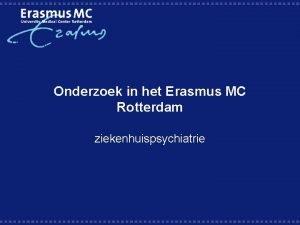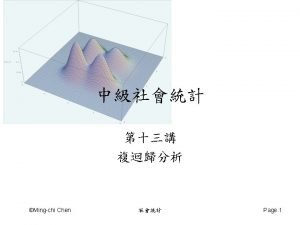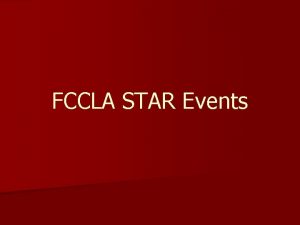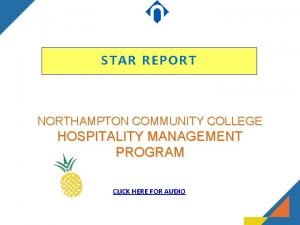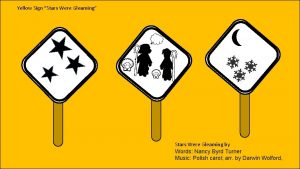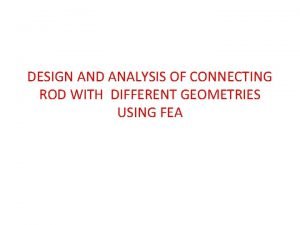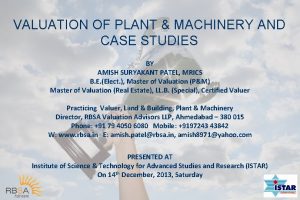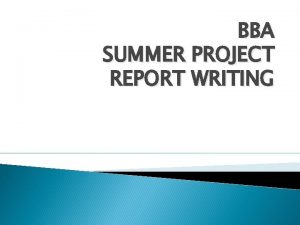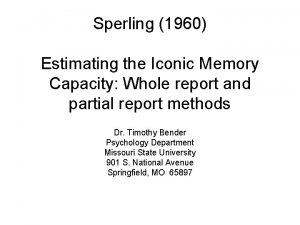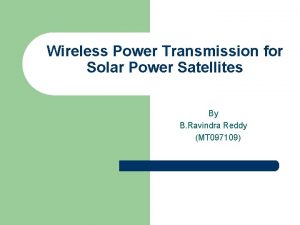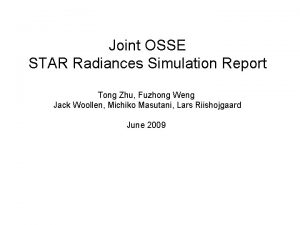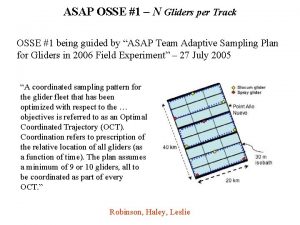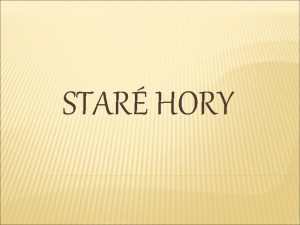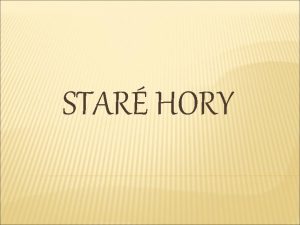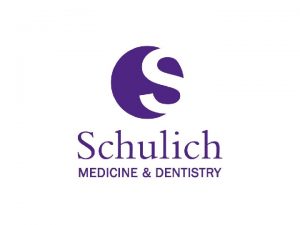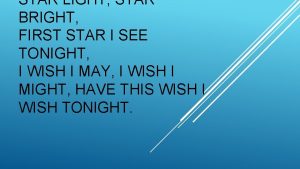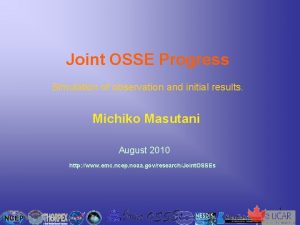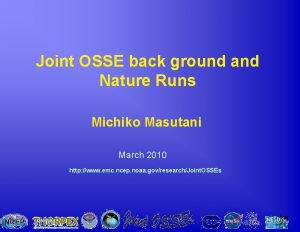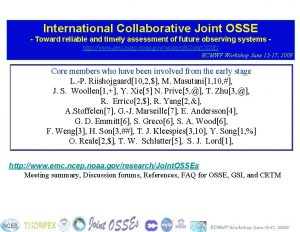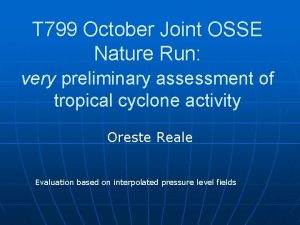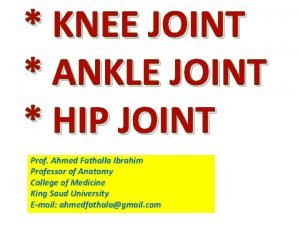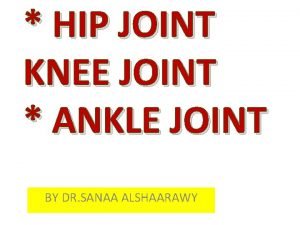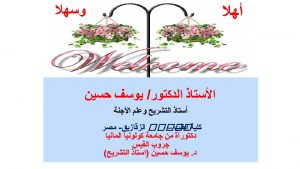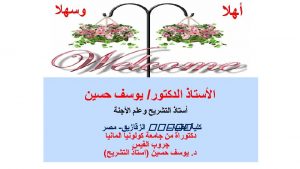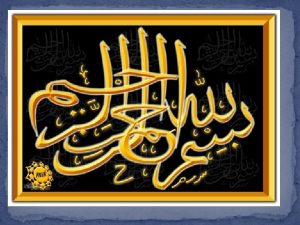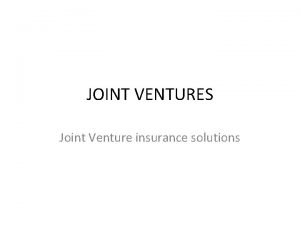Joint OSSE STAR OSSE Project Report Plan and





















- Slides: 21

Joint OSSE STAR OSSE Project Report Plan and Accomplishment Fuzhong Weng (OSSE) and Tong Zhu (OSSE) Yong Han (CRTM), Mitch Goldberg (GOES_R series), Lidia Cucurull (GPS/RO) Joint OSSE review/coordination meeting December 17, 2009

Objectives • Develop Critical CRTM components for OSSE • Radiance simulations for operational and future instruments • Validation of simulated radiances 2

Focused Missions • GOES-R series instruments • Post-NPOESS era instruments • Joint program instruments (e. g. GPS/RO) 3

Forward Model Requirements • Simulate radiances for all current instruments used in NWP • Simulate all planned instruments that will be used in NWP 4

Community Radiative Transfer Model Supported Instruments • • • • • • GOES-R ABI Metop IASI TIROS-N to NOAA-18 AVHRR TIROS-N to NOAA-18 HIRS GOES-8 to 13 Imager channels GOES-8 to 13 sounder channel 08 -13 Terra/Aqua MODIS Channel 1 -10 METEOSAT-SG 1 SEVIRI Aqua AIRS Aqua AMSR-E Aqua AMSU-A Aqua HSB NOAA-15 to 18 AMSU-A NOAA-15 to 17 AMSU-B NOAA-18 MHS TIROS-N to NOAA-14 MSU DMSP F 13 to 15 SSM/I DMSP F 13, 15 SSM/T 1 DMSP F 14, 15 SSM/T 2 DMSP F 16 SSMIS NPP ATMS Coriolis Windsat SSU “Technology transfer made possible by CRTM is a shining example for collaboration among the JCSDA Partners and other organizations, and has been instrumental in the JCSDA success in accelerating uses of new satellite data in operations” – Dr. Louis Uccellini, 5 Director of National Centers for Environmental Prediction

GOES-R ABI simulations GOES-R ABI Band 14 (11. 2 m) • Use for future GOES -R instrument OSSEs • Use for GOES-R Algorithm tests (AWG) • Prepare user readiness of ABI 6

Current GOES Imager vs. GOES-R ABI vs. Current GOES • Current GOES Imager IR band has 4 km horizontal resolution (FOV), GOES Sounder has 10 km resolution. A full disk scan has total 10, 080, 910 observation points, and takes about 26 min. • GOES-R ABI sensor will has 1 km/2 km resolution. A full disk scan rate is as high as 5 minutes. GOES-R ABI Band Central Wavelength (μm) 1 (blue) 1 km 0. 47 2 (red) 0. 5 km 0. 64 3 1 km 0. 86 4 2 km 1. 38 5 1 km 1. 61 6 2. 26 7 3. 9 8 6. 185 9 6. 95 10 7. 34 11 2 km Current GOES Band 1 1 km 2 4 km 3 4 km 4 4 km 8. 5 12 9. 61 13 10. 35 14 11. 2 15 12. 3 5 (G 08) 4 km 16 13. 3 5 (G 12) 4 7 km

OSSE Radiance Simulation Flow Chart Nature Run (ECMWF T 511/T 799) New instrument viewing geometry Current sensors viewing geometry DBL 91 Atmospheric and Surface Dataset Radiance Simulations with CRTM Model Validation Convert to BUFR Format GSI Assimilation 8

Simulation of GOES 10/12 • GOES 10 and GOES 12 Sounders radiance data was simulated for the time period from May 2, 2005 to May 31, 2006 from ECMWF T 511 NR Thin Dataset. • The simulated radiances were validated against observations. • Statistical analysis was performed to show data quality. 9

NR_CRTM GOES-12 Sounder 1200 UTC 01 OCT, 2005 10

Observed GOES-12 Sounder 0230 UTC 01 OCT, 2005 11

OBS vs. NR GOES-12 Sounder RMS and Mean Tb 28 SEP – 10 OCT 2005 Observed vs. simulated GOES-12 sounder for the mean Tb over North Atlantic Ocean region. Black lines are mean Tb from NR simulated, and the red lines are the mean Tb from observation. For window channels, like band 8 (11. 03 µm), RMS is bigger because the surface temperature from ECMWF NR model has big difference as compared with that of observations 12

NR GOES-12 Sounder full disk mean Tb over clear, cloudy and all sky conditions Time period for 28 SEP – 10 OCT 2005 13

Simulation of AMSU-A/B • AMSU-A on NOAA 15 and 16, AMSU-B on NOAA 15, 16, and 17 radiances were simulated for the same 13 months. • 6 -Hourly radiance data has been simulated, with the data coverage consistent with the operational GSI data ingest time. • Update the simulation by using NR output ice coverage data. • Angular dependences and channel correlations have been calculated. More validation study is necessary. 14

Simulated AMSU-A NOAA 15 with NR ICE 1800 UTC 31 May 2005 With Climatology Ice With Nature Run Ice 15

Comparison With Observation 1800 UTC 31 May 2005 Observation Simulation with NR Ice 16

AMSU-A TB channel relations at 1800 UTC May 31, 2005 Observation: 17094 points Simulation: 3742 points

AMSU-A Angular Dependent Check NOAA-15 NR simulated angular dependent TB NOAA-15 Observed angular dependent TB 18

Simulation of GOES-R ABI • • • ECMWF T 799 Nature Run data is used to simulate GOES-R ABI data with CRTM model. One week ABI radiance data from ECMWF Nature Run data have been simulated for October 1 -7, 2005. Hourly ABI data is simulated over CONUS region with 60 -km resolution. ABI Ch 9 Water Vapor band ABI Ch 16 CO 2 band 19

Summary • CRTM is ready for GOES-R instruments • Thirteen months GOES-10/12 Sounder radiances have been simulated. By compared with observations, it is find that the bias of Tb is below 2 k, and RMS is below 3 K for each band. • Thirteen months AMSU-A/B data on NOAA 15, 16 and 17 have been simulated, • One week GOES-R ABI brightness temperature data have been simulated, 20

Plan • Refine the simulated radiances by using Nature Run surface vegetation cover and type, • Prepare more radiances for OSSE study, • Study GOES-R ABI impacts with GSI/GFS models • Specify the noise characteristics associated with each simulated data 21
 Star of wonder star of night star of royal beauty bright
Star of wonder star of night star of royal beauty bright Robert jan osse
Robert jan osse The normal
The normal Ao* algorithm example
Ao* algorithm example What is a semi permanent joining application
What is a semi permanent joining application Ellipsoid joint examples
Ellipsoid joint examples Star events stands for
Star events stands for Cutability
Cutability Membrane tectoria
Membrane tectoria Memorandum joint venture account
Memorandum joint venture account Lamb grading chart
Lamb grading chart Star report hospitality
Star report hospitality Difference between status report and progress report
Difference between status report and progress report Project star gleaming arrow
Project star gleaming arrow Stages of star life cycle
Stages of star life cycle Connecting rod material
Connecting rod material Machinery valuation report
Machinery valuation report The summer project report is written
The summer project report is written Cost control and cost reduction project report
Cost control and cost reduction project report Cost control and cost reduction project report
Cost control and cost reduction project report Using the partial report method sperling
Using the partial report method sperling Wireless power transmission project report doc
Wireless power transmission project report doc

